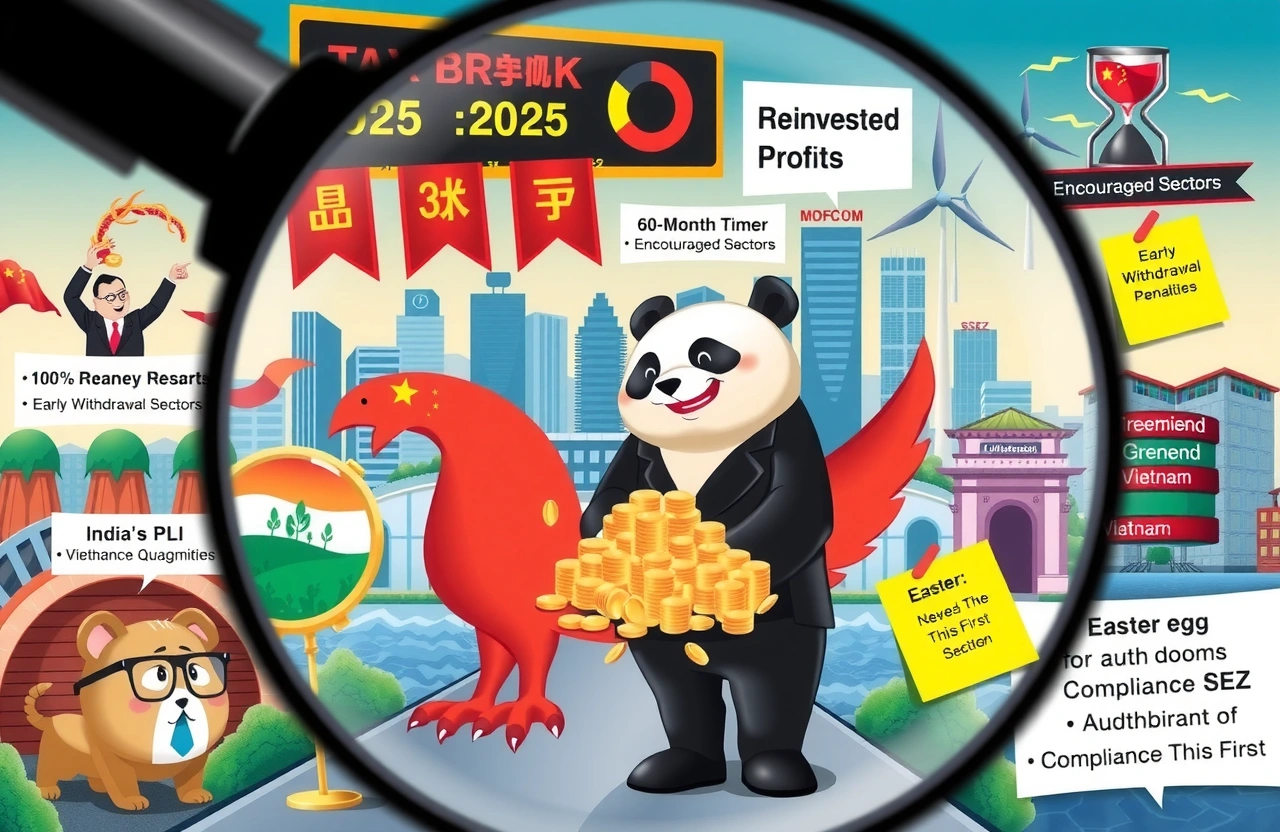Major Policy Shift Targets Foreign Investment Revival
China’s Ministry of Finance, State Taxation Administration, and Ministry of Commerce (MOFCOM) have jointly announced an aggressive tax credit initiative to attract and retain foreign capital. Starting January 1, 2025, qualified foreign investors redeploying Chinese profits into domestic projects will receive substantial tax relief. This coordinated effort signals China’s strategic pivot toward stabilizing foreign investment amid economic headwinds.
The Five-Pillar Eligibility Framework
The policy creates precise conditions for maximizing investment retention through 2028. Underscored by strict verification mechanisms, this foreign investment incentive requires simultaneous satisfaction of five legally binding requirements.
Profit Origination and Utilization Rules
Foreign investors must demonstrate their capital originates solely from dividends distributed by Chinese resident enterprises. This foreign investment incentive explicitly prohibits secondary market acquisitions and limits qualified deployment to:
- Expansion of existing production facilities
- Greenfield developments
- Strategic unlisted company acquisitions
Sector Alignment Mandate
Reinvestment targets must comply with MOFCOM’s annually updated Encouraged Foreign Investment Industries Catalog. Participation requires documented proof that recipient enterprises operate within permitted sectors throughout the mandatory holding period.
Operational Mechanics and Tax Benefits
The 10% Tax Credit Mechanism
Qualified investors can immediately offset 10% of their reinvestment value against current tax liabilities. Unused credits remain transferable for future periods—a deliberate design encouraging substantial capital deployment through this foreign investment incentive.
International Treaty Integration
Where bilateral tax agreements provide preferential dividend treatment (<10%), the lower treaty rate overrides domestic provisions. This calibrated flexibility recognizes China's 114 existing tax treaties while maintaining policy coherence.
The Critical Five-Year Horizon
The mandated holding period functions as the cornerstone safeguarding scheme integrity. Strict transactional controls govern asset transfers:
Capital Deployment Protocols
Cash reinvestments require direct inter-enterprise transfers without intermediary accounts. Non-cash investments demand immediate transfer documentation proving elimination of transitional custodianship.
Early Withdrawal Penalties
Departure before 60 months triggers severe consequences:
- Full tax repayment + interest within 7 days
- Proportionate credit allowance reductions
- Compliance investigations by joint task forces
Regulatory Compliance Architecture
MOFCOM will implement real-time investment tracking through blockchain-enabled monitoring. Foreign investors must submit quarterly compliance certifications and maintain document trails reconstructing:
- Capital source verification
- Sector eligibility proof
- Transaction audit trails
Strategic Context and Policy Evolution
Building on Historical Precedents
The initiative extends China’s 2017 withholding tax exemption framework. Previously limited to pre-tax advantage mechanisms, this foreign investment incentive shifts focus toward post-distribution credits—rewiring fundamental investment calculus.
Global Positioning Strategy
With Southeast Asian competitors increasing investment subsidies, this intensifies China’s value proposition beyond manufacturing scale advantages. Singapore’s Global Investor Programme offers informative comparative insights.
Implementation Roadmap and Forward Strategy
Foreign enterprises should immediately audit legacy investments for conversion potential. Recommended phased action plan:
Qualification Audit Phase
Perform internal mapping to:
- Tag eligible profit sources
- Precertify subsidiary operations against encouraged catalog
- Establish segregated transfer accounts
Deployment Optimization Phase
Structure reinvestment sequencing to maximize cash management efficiency. Tier deployment schedules aligning with:
- Production capacity expansion windows
- Technology upgrade cycles
- Regulatory milestone deadlines
Global Implications and Future Outlook
This foreign investment incentive positions China competitively against India’s Production-Linked Incentives and Vietnam’s special economic zone programs. Successful implementation could reverse the Foreign Direct Investment momentum shift recorded since 2022.
The Path Forward for International Investors
Immediate engagement with MOFCOM provincial offices accelerates document verification shielding companies from future eligibility disputes. Enterprises should prioritize compliance workshop participation beginning late Q3 2024 before policy activation. Maximum strategic advantage flows from synchronizing reinvestment decisions with provincial development blueprints recently released.




